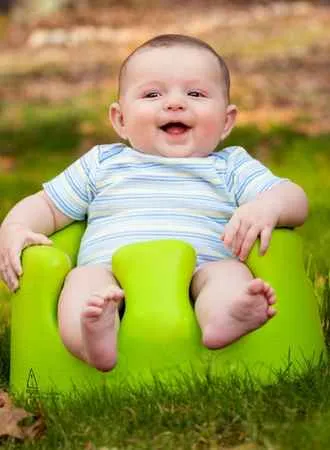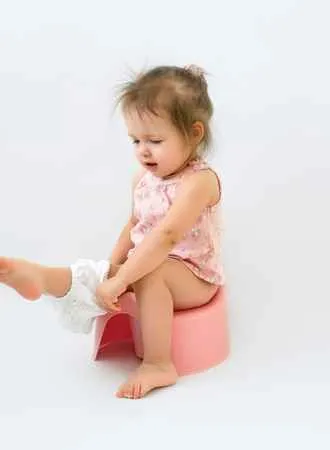As a parent, you want to do everything you can to support your baby’s development. That’s why when it comes to popular baby products like Bumbo seats, you may be wondering: do they really help or hurt?
In this article, we’ll take a closer look at the controversial topic of Bumbo seats and infant development, separating myth from reality.
So, grab a cup of coffee, and let’s dive into the facts you need to know to make the best choices for your little one.
Key Takeaways on How Bumbo Infant Seat Affects A Young Child’s Development
- Bumbo seats may have some benefits, but they’re not a magic solution for promoting infant development. Parents should weigh the pros and cons carefully before deciding to use them.
- While some studies suggest that Bumbo seats can delay motor development, the research is inconclusive, and many other factors can influence infant development.
- There are many alternative ways to support your baby’s motor and cognitive development without relying on Bumbo seats, including tummy time, interactive play, and talking to your baby. By taking a holistic approach to infant development, you can help your little one thrive.
What is a Bumbo Seat?
Essentially, a Bumbo seat is a small, molded baby-sitting device designed for infants to sit in. They’re made from a soft foam material that helps seat young babies and support their back and provide a comfortable seating position.
The Bumbo seat was first introduced in South Africa in 2001 by designer Johan Buitendach. It quickly became a hit with parents, and soon spread to other countries, including the United States. Nowadays, you can find Bumbo seats in a variety of colors and styles, making them a trendy addition to many nurseries.
While Bumbo seats have many fans, they also have their fair share of critics. Some experts argue that the seats can be dangerous, as babies can easily tip over in them. Additionally, there are concerns that Bumbo seats may delay the development of important motor skills, as babies are not able to move and explore their environment as easily while sitting in them.

The Debate: Pros and Cons
One of the main arguments against Bumbo seats is that they may delay motor development by preventing babies from exploring and moving their bodies. These movements are essential for healthy brain development. While babies can sit independently in these seats, which sounds like a seemingly convenient option, the leg locking position is considered a very unnatural posture that prevents natural weight bearing.
Some studies have supported this argument, but others have found no significant differences in motor development between babies who use Bumbo seats and those who do not.
On the other hand, proponents of Bumbo seats argue that they provide developmental benefits and a comfortable and supportive place for babies to sit, which can be particularly helpful for parents who need to keep their babies occupied while they’re doing other things.
Expert Insights and Recommendations
So, what do early childhood experts say? While opinions vary, most experts agree that Bumbo seats should not be used as a substitute for tummy time, which is essential for helping babies develop the strength and coordination they need to crawl and walk.
While infant floor seats are often praised for their ability to help babies sit up, there is a growing concern that they may actually hinder the development of core stability and natural movement. The problem lies in the fact that these seats are so effective at providing support that babies may rely on them too heavily, without having the chance to develop the muscles and skills necessary to sit up on their own. It is too restrictive to promote healthy development.
Over time, this can lead to abnormal motor patterns, which can impact everything from everyday movement as a toddler to athletic participation as a teenager and even into adulthood. To ensure the healthiest development for your baby, it’s important to strike a balance between providing support and encouraging natural movement and independence.
Evidence-based research suggests that the impact of Bumbo seats on infant development may depend on a variety of factors, such as a baby’s age, developmental stage, and the amount of time they spend in the seat. Some experts recommend using Bumbo seats for short periods of time, while others suggest avoiding them altogether as using them may prevent a child being able to get into a seated position on their own.

Making the Best Choice for Your Baby
Ultimately, the decision of whether or not to use a Bumbo floor seat with your baby should be based on a variety of factors, including your baby’s age, developmental stage, and individual needs. By considering the pros and cons, expert opinions, and your own unique situation, you can make an informed decision that’s best for your baby’s health and development.
So, whether you decide to use a Bumbo seat or not, remember that there are many other ways to support your baby’s motor and cognitive development, including tummy time, interactive play, and plenty of love and attention.
FAQs on Bumbo Baby Seats
When Can A Baby Sit In A Bumbo Seat?
Most babies can sit without support by the age of six months. However, babies can usually get into a sitting position by themselves between the ages of eight and twelve months.
It’s recommended that you use a Bumbo seat only after your baby learns to control their own head and trunk control to get into a sitting position themselves. This indicates the child’s ability to hold their head and back steady without support.

Are Bumbo Seats Safe For Babies?
When used as intended, Bumbo seats are considered safe and appropriate with their many technical design features. They should only be placed on the floor and used under adult supervision. Bumbo seats may be useful when camping or traveling with your baby since they are lightweight.
However, it’s important to never leave your baby unattended while in a Bumbo seat, even if they have gained head control. You should also avoid putting the seat on an raised surface as it increases the risk of falling.
What Are The Precautions For Using A Bumbo Seat?
When using a Bumbo seat for your baby, there are several precautions to keep in mind. You should never leave your baby unattended while in the seat, even for a few moments. You should also avoid putting the seat on an elevated surface as it increases the risk of falling.
If the Bumbo seat does not have a restraint belt, the baby may crawl out of it and hurt themselves.
Overuse of Bumbo seats or similar floor seats, baby chairs, car seats, or swings might increase the risk of container baby syndrome, which can result in developmental delay and limits sensory input.

What To Use Instead Of A Bumbo Seat?
If you have concerns about positioning babies in a restrictive posture despite having good head control, there are various other activities that help baby development and push natural progression toward sitting milestone,
- To encourage tummy time in babies, start by placing them on their stomachs for short periods, gradually increasing the duration as they become more comfortable. Use a soft, clean blanket or play mat to provide a comfortable surface. Additionally, get down on the floor with them and engage in play and interaction to make it a fun and enjoyable experience during floor time.
- Assisted sitting is a technique where you sit your baby up and support them with your hands or with a pillow. You can sit behind your baby and use your hands to support their upper body or place a pillow behind their back to provide some support. This way, your baby can practice sitting upright without having to balance their weight entirely on their own. You can gradually reduce the amount of support you provide as your baby gets stronger and more confident in sitting upright independently.
- Support babies using nursing pillows which help them into sitting independently. Place a nursing pillow around your baby’s waist as they start sitting, positioning it snugly against their back and under their arms. This will provide support for their upper body and help them maintain a seated position. You can sit in front of your baby and interact with them while they practice sitting up independently. Gradually, you can remove the nursing pillow and let your baby sit on their own. Just make sure to always supervise your baby during this exercise and keep them safe from falling.

Bumbo Models
There are two types of bumbo baby seat, the bumbo floor seat and the bumbo multi seat.
If your baby isn’t yet able to sit up on their own, Bumbo floor seats can help as it helps children get into a sitting position before they can on their own, particularly designed for young babies. Made from soft, comfortable foam material, it supports your baby’s posture and encourages interactive play.
As your baby grows and becomes more independent, the Bumbo multi seat is the perfect solution. Designed for babies and toddlers who can sit up unaided, it offers a 3-in-1 design that can be used as a floor seat, booster seat, or feeding seat. It can also be used securely to a dining room chair.
Do the new Bumbo floor seats help babies learn to sit up?
Bumbo seats are designed to provide little upper body support while encourage babies to sit upright on their own. While they can provide temporary support for a baby’s posture, they do not necessarily help babies learn to sit up on their own.
Babies develop the muscles and coordination necessary for sitting up through natural development and practice. Tummy time, where a baby spends time on their stomach, can help strengthen their core muscles and prepare them for sitting up. Additionally, allowing babies to practice sitting up with support from pillows or cushions can also help them develop the necessary skills.
While Bumbo seats can be useful for allowing babies to sit up and observe their surroundings, it’s important to remember that they should always be supervised while using the seat. Babies should not be left unattended in a Bumbo seat, as they can tip over or fall out of the seat.






